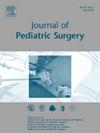胎盘血的储存——胎儿血库发展的可行性研究。
IF 2.5
2区 医学
Q1 PEDIATRICS
引用次数: 0
摘要
目的:新生儿输血成人供血(富含HbA)会导致胎儿血红蛋白(HbF)水平急剧下降。本研究评估胎盘脐带血采集和储存的可行性。方法:前瞻性研究于2022年7月至2023年12月招募进行计划剖宫产的无并发症足月妊娠患者。脐带血采集后,在我们的机构血库进行处理和储存。分别在第0、7、14和21天对样品进行分析。结果:招募了30例患者(55%为白种人,中位产妇年龄34岁,胎龄39周,出生体重3.48 kg)。中位采集量为83 mL;由于容量不足,8个集合被排除在外。第0天和第21天溶血中位数分别为0.10%和0.23%,溶血中位数损失为2.5%。21天的中位生化储存病变在预期范围内(24.5 mmol/L钾,71.2 mg/dL游离血红蛋白,pH 6.38, LDH 191 IU/L)。全天21例血培养呈阴性。血红蛋白含量在0 - 21天保持不变(16.2-17.8% HbA和83.8-82.2% HbF)。结论:胎盘脐带血可安全采集、处理并保存21天,是一种潜在的新生儿自体血液制品。研究类型:II级,前瞻性队列;关键词:血库,胎儿血红蛋白,新生儿输血。本文章由计算机程序翻译,如有差异,请以英文原文为准。
Storage of Placental Blood – A Feasibility Study for Development of a Fetal Blood Bank
Objective
Neonates transfused with adult donor blood (rich in HbA) have a precipitous drop in fetal hemoglobin (HbF) levels. This study evaluates the feasibility of collection and storage of placental cord blood.
Methods
Prospective study patients with uncomplicated term pregnancies undergoing scheduled cesarean section were recruited from July 2022–December 2023. Cord blood was collected after delivery for processing and storage in our institutional blood bank. Samples were analyzed at 0, 7, 14, and 21 days.
Results
Thirty patients were recruited (55 % Caucasian with median maternal age 34 years, gestational age 39 weeks, birth weight 3.48 kg). Median collection volume was 83 mL; 8 collections were excluded due to inadequate volume. The median hemolysis was 0.10 % on Day 0 and 0.23 % on Day 21 with median loss 2.5 %. Median biochemical storage lesion at 21 days was within expectations (24.5 mmol/L potassium, 71.2 mg/dL free hemoglobin, pH 6.38, LDH 191 IU/L). All day 21 blood cultures were negative. Hemoglobin fractions remained unchanged between 0 and 21 days (16.2–17.8 % HbA and 83.8–82.2 % HbF).
Conclusion
Placental cord blood can be safely collected, processed, and stored for 21 days as a potential autologous blood product for neonates.
Type of study
Level II, Prospective Cohort.
求助全文
通过发布文献求助,成功后即可免费获取论文全文。
去求助
来源期刊
CiteScore
1.10
自引率
12.50%
发文量
569
审稿时长
38 days
期刊介绍:
The journal presents original contributions as well as a complete international abstracts section and other special departments to provide the most current source of information and references in pediatric surgery. The journal is based on the need to improve the surgical care of infants and children, not only through advances in physiology, pathology and surgical techniques, but also by attention to the unique emotional and physical needs of the young patient.

 求助内容:
求助内容: 应助结果提醒方式:
应助结果提醒方式:


